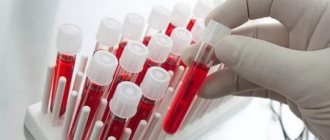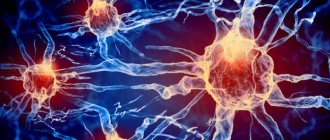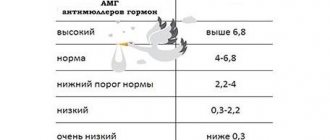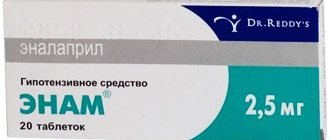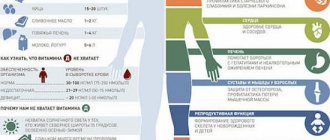Main types of hormones
Hormones are divided into two groups: estrogenic (the so-called female hormones) and androgenic (male) hormones. The first group determines a woman’s ability to bear a child, and androgens form primary and secondary sexual characteristics.
There are also hormones that affect a woman’s emotional state, her ability to love, show tenderness and care. Thanks to these substances, natural instincts develop (for example, maternal instinct).
If the hormonal levels are normal, the woman feels good, but if there is a lack of female hormones, health problems arise.
Indications for research in men
Men are recommended to donate blood for sex hormones in the following cases:
- infertility;
- hair loss;
- acne on various parts of the body;
- erectile disfunction;
- decreased or absent sexual desire;
- male menopause;
- signs of primary or secondary hypogonadism;
- prostate diseases, in particular chronic prostatitis;
- decreased bone density.
For representatives of both sexes, analysis is simply necessary when choosing treatment tactics and monitoring the effectiveness of hormone therapy.
Estrogen
Female hormones are produced in the ovaries and are responsible for the external features of a woman’s figure and the roundness of her shape. They also influence the condition of the skin and hair, and also take part in the formation of character.
Estrogen is one of the most important female hormones. If the body produces an insufficient amount of this substance, then the woman’s physique has characteristic masculine outlines, facial hair may appear, and the skin quickly fades.
Excessive production of estrogen contributes to the deposition of fat in the abdomen and thighs.
Estrogen is a female hormone that is produced in the placenta during pregnancy. It is responsible for the cyclicity and regularity of the menstrual cycle. This component promotes the production of protective substances that stop the development of infection.
Why do you need to examine hormone levels in women?
Hormone tests at different periods of a woman’s life make it possible not only to assess hormonal levels, but also to identify hormonal imbalances. Using the results obtained, it is often possible to diagnose problems in the body and eliminate them in a timely manner.
The doctor will suggest that the woman take hormone tests if any signs of pathology appear in order to eliminate it and normalize hormonal levels.
Hormone analysis is not the most reliable diagnostic method for a woman’s health; it is only an auxiliary technique for assessing the activity of many body systems.
A woman takes tests for sex hormones when there is a hormonal imbalance, which negatively affects the body and its functioning. Having identified a dishormonal condition, the doctor is able to timely diagnose the pathological condition and prescribe the correct treatment.
To obtain reliable results, it is important to take hormone tests correctly: blood is taken at a certain period of the menstrual cycle for each hormone.
A doctor may prescribe a blood test for hormones in different situations:
- for menstrual irregularities;
- with heavy or scanty periods;
- for pain during menstruation;
- for problems with conception and pregnancy;
- with poor condition of skin, hair and nails;
- with decreased libido;
- with increased hair growth;
- in case of violation of the child’s physical development;
- for acne;
- for tumors in the uterus and ovaries;
- for obesity;
- with a tendency to disease;
- with sexual infantilism.
Knowing the hormonal background in all these conditions, you can easily eliminate the problem if the disorders are diagnosed in a timely manner. Normalizing hormone levels by qualified specialists will help you quickly and easily cope with the problem.
Pituitary hormones
The pituitary gland is a gland that produces substances that affect the most important functions of the body: growth, metabolism, reproduction. The pituitary gland is divided into anterior and posterior parts, each of them performs its own tasks.
The following hormones are produced in the anterior part:
- 1. ACTH.
This substance affects the oxidation of fats, the synthesis of insulin, and cholesterol. The hormone affects the genitals and adrenal cortex. Pigmentation depends on its quantity. With an excess of the hormone, there is a danger of developing Itsenko-Cushing's disease, and a deficiency can provoke a slowdown in metabolic processes.
- 2. TSH.
This is a substance that is produced in the anterior lobe of the pituitary gland and affects metabolic processes, the functioning of the thyroid gland, heart, and nervous system. Excess of the hormone can cause the development of thyrotoxicosis.
Analysis of TSH levels allows you to determine the causes of female infertility.
- 3. LH, FSH.
FSH and LH (follicle-stimulating and luteinizing hormone) are pituitary hormones that affect the functioning of the gonads. They are directly involved in the production of estrogen and progesterone.
FSH is the main hormone responsible for follicle growth and maturation. LH promotes follicle maturation before and during ovulation.
- 4. Prolactin.
This substance performs an important function in the female body. The full development of a woman’s mammary glands, as well as milk production, depends on it. If there is an excess of this female hormone, it may be difficult to conceive a child.
The posterior lobe of the pituitary gland produces oxytocin (affects labor) and vasopressin (a substance that promotes the absorption of water in the kidneys).
A comprehensive examination of the main hormones of the female reproductive system, which is used in the diagnosis of menstrual cycle disorders (MCI) and infertility.
Synonyms Russian
Hormones of the female reproductive system.
English synonyms
Female Sex Hormones Check up;
Female Reproductive System Laboratory Panel.
What biomaterial can be used for research?
Venous blood.
How to properly prepare for research?
- Do not eat for 2-3 hours before the test; you can drink clean still water.
- Avoid (in consultation with your doctor) taking steroid and thyroid hormones for 48 hours before the test.
- In the absence of special instructions from the doctor, it is recommended to take blood for analysis before 11 a.m.
- Avoid physical and emotional stress for 24 hours before the test.
- Do not smoke for 3 hours before the test.
General information about the study
A woman’s reproductive function is maintained through the coordinated interaction of hormones from the ovaries, pituitary gland and hypothalamus. To assess female hormonal status, a comprehensive study of the hormones of the female reproductive system is carried out. The most important hormones of the female reproductive system are:
1. Estrogens: estrone, estriol, estradiol. Estradiol is the main sex hormone of women of reproductive age. It is produced by the ovaries and, in smaller quantities, by the cells of subcutaneous adipose tissue and skin. Its main function is to prepare the endometrium of the uterus for embryo implantation. The concentration of estradiol increases in the first half of the menstrual cycle and reaches a maximum during ovulation. Impaired production of estradiol by the ovaries during reproductive age leads to anovulatory cycles and menstrual cycle disorders (MCI). A decrease in the level of estradiol, which is normally observed during the aging of the female body, is accompanied by such effects as age-related skin changes, lability of emotions, dyspareunia and others. The main sex hormone during pregnancy is estriol, and in postmenopause estrone. All female sex hormones are formed as a result of biochemical transformations of male sex hormones - testosterone and other androgens.
2. Hormones of the adenohypophysis. The synthesis of estrogen and the condition of the endometrium are under the control of follicle-stimulating (FSH) and luteinizing hormones (LH) of the adenohypophysis. Both hormones are heterodimers and consist of two protein subunits alpha α and beta β. The alpha subunits of FSH, LH, as well as thyroid-stimulating hormone (TSH) and human chorionic gonatropin (hCG) have exactly the same structure. Beta subunits, on the other hand, are unique to each hormone and provide their unique function. The main function of FSH is to stimulate follicle maturation, which is reflected in the name of this hormone. The main role of LH is to control ovulation and form the corpus luteum.
3. Prolactin is a hormone of the adenohypophysis, structurally reminiscent of growth hormone and chorionic somatomammotropin. The main functions of prolactin are: (1) development of the mammary glands, (1) milk secretion, (2) inhibition of FSH and LH. The secretion of prolactin is under strict control of the hypothalamus. Normally, dopamine from the hypothalamus inhibits the secretion of prolactin. As a result, prolactin concentrations in non-pregnant women remain at a very low level (about 8 ng/ml). There are several physiological and pathological stimuli that increase prolactin levels. Physiological stimuli (sleep, stress, physical activity) lead to transient and minor fluctuations in prolactin levels that do not affect fertility. On the contrary, pathological stimuli (prolactinoma, hypothyroidism, antipsychotic drugs) lead to a persistent and significant increase in prolactin levels, which inhibits the cyclic effects of FSH and LH and, as a consequence, leads to anovulation and infertility.
When preparing for the analysis and when assessing its results, it is necessary to take into account the phase of the menstrual cycle against which the blood was taken for testing. It is advisable to study FSH and estradiol on days 2-3 of the follicular phase of the menstrual cycle, LH - in the middle of the follicular phase of the cycle, prolactin - in the luteal phase of the cycle.
This comprehensive study includes basic laboratory tests. A woman's reproductive function is also influenced by some other hormonal factors, including thyroid and adrenal hormones. So, the cause of anovulation may be hypo/hyperthyroidism or Cushing's syndrome. For this reason, in some cases, more comprehensive laboratory testing (eg, tests for sexually transmitted infections) may be indicated. The result of the study is assessed taking into account all significant clinical, laboratory and instrumental data. It is recommended to perform repeated tests using the same test systems, that is, in the same laboratory.
What is the research used for?
- To assess a woman’s hormonal status;
- for the diagnosis of menstrual irregularities, anovulation, menopause.
When is the study scheduled?
- When examining an infertile couple;
- when examining a patient with menstrual irregularities: primary amenorrhea (absence of menarche under the age of 14 years in the absence of secondary sexual characteristics or up to 16 years in the presence of sexual characteristics), secondary amenorrhea (absence of the menstrual cycle for 3 or 6 months in a previously menstruating woman) , dysmenorrhea (pain during the menstrual cycle) and menorrhagia (heavy menstrual bleeding).
What do the results mean?
Reference values
For each indicator included in the complex:
- [08-111] Luteinizing hormone (LH)
- [08-119] Follicle-stimulating hormone (FSH)
- [08-120] Estradiol
- [08-122] Prolactin
Thyroid hormones
Thyroid hormones are components that are synthesized by the thyroid gland. They take part in various physiological processes of the body. They contain an iodine component.
Thyroid hormones are:
- Free thyroxine, triiodothyronine.
- Total thyroxine, triiodothyronine.
- Thyroxine-binding globulin and thyroglobulin.
The thyroid gland also produces calcitonin and parathyroid hormone, these substances control the process of calcium metabolism.
Thyroid hormones stimulate growth and development of the body, affect the heartbeat, and help remove excess fluid from the body. They affect physical and mental work, and also stimulate metabolism.
The ovaries contain receptors that respond to thyroid hormones. Thanks to them, the growth of follicles is stimulated, the production of progesterone and estrogens is enhanced.
These substances help reduce the production of glycogen and fat deposits. A large amount of thyroid hormones slows down protein metabolism, and a low concentration of these substances promotes protein synthesis. A thyroid hormone test can determine the presence of thyroid disease.
References
- Ilyasova, N.A., Burlev, V.A. Clinical and endocrine features of the menstrual cycle of women. Gynecology, 2015. - No. 6.
- Khasanov, A.A., Zhuravleva, V.I. Modern ideas about the regulation of menstrual function. PM, 2009. - No. 34.
- Pereira, H., Larson, R., Bemben, D. Menstrual Cycle Effects on Exercise-Induced Fatigability. Front Physiol., 2021. - Vol. 11. – 517 p.
- Monis, C., Tetrokalashvili, M. Menstrual Cycle Proliferative And Follicular Phase., 2021.
What to do if your estrogen levels are too low or too high?
Both excess and deficiency of these essential hormones can have negative consequences.
Excess estrogen most often occurs in women who are obese, have diabetes, have hypertension, and have certain types of cancer, such as ovarian cancer. This is also associated with taking inadequate doses of estrogen-based drugs.
The effects of excess estrogen include:
- menstrual irregularities,
- headaches, seizures, including migraines,
- nausea and vomiting
- excessive growth of the endometrium, which can lead to cancerous changes,
- increased risk of blood clots and embolisms,
- swelling,
- breast enlargement,
- weight gain,
- general malaise,
- mood swings.
Estrogen deficiency is physiological in women during menopause, but pathological in women of reproductive age.
This may contribute to the following disorders:
- irregular menstrual cycles or their absence,
- infertility,
- disappearance of 2- and 3-row sexual characteristics,
- vaginal dryness,
- urinary tract infections,
- urinary incontinence,
- hot flashes and profuse sweating,
- sleep disorders,
- decreased sexual desire,
- mood instability and depression,
- loss of breast firmness,
- deterioration of the quality of the skin,
- calcium disorders and osteoporosis,
- heart disease as a result of high cholesterol.
Why are hormone tests done?
The content of the article
Almost all processes that occur in the human body are controlled to one degree or another by hormones - elements constantly produced by the secretory glands. All changes directly depend on the concentration of these substances in the body - maturation, growth, pregnancy, and so on. Even minor disruptions in the functioning of the secretory glands lead to a lack or excess of their formation, which results in pathological processes. Constancy of hormonal levels is impossible, since various hormonal elements and structures in the body are constantly being formed and destroyed.
It is to identify and eliminate such disorders that studies are carried out - on hormones. Despite the fairly high price of the tests,
It is necessary to carry out all studies recommended by the doctor.
find out what hormone tests
are needed in order to keep the intensity of substance formation under control in this article.
